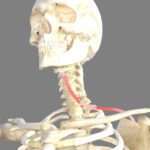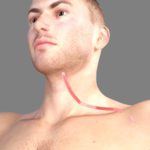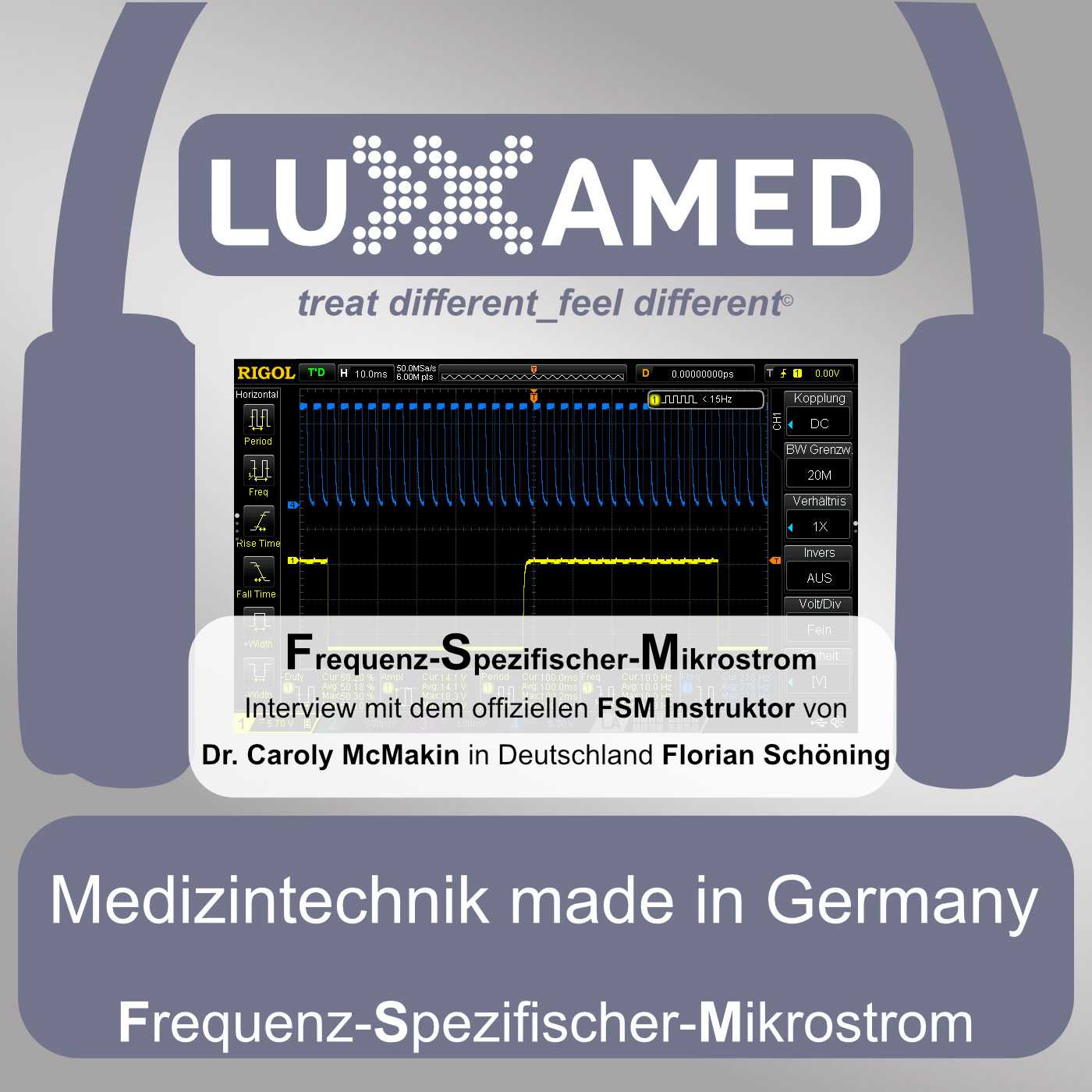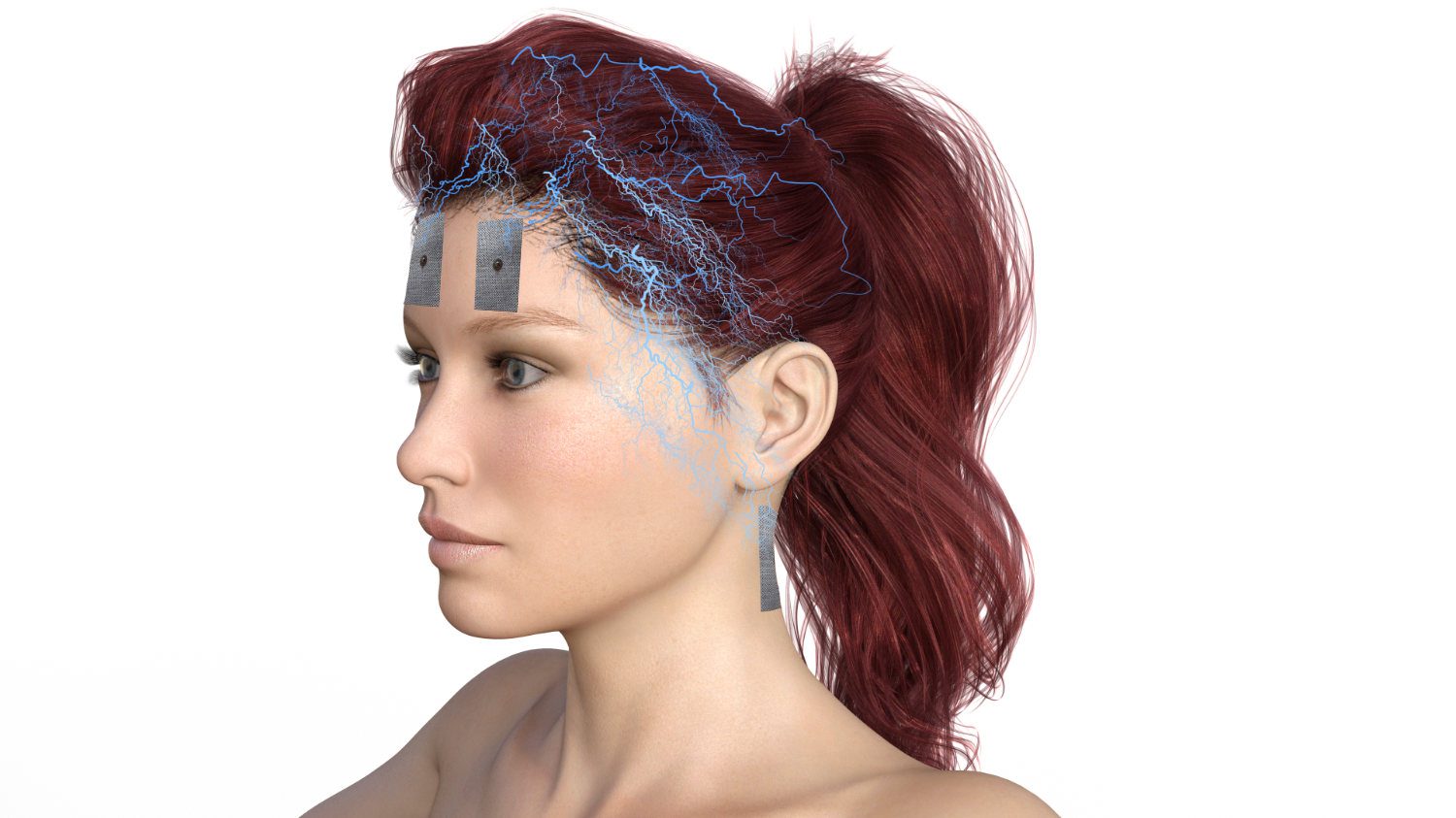Dieser Beitrag ist auch verfügbar auf:
![]() Deutsch
Deutsch
M. omohyoideus – Twitch leg muscle
When dealing with the omohyoideus muscle, it becomes clear once again, especially in this case, that we should always keep the ‘systemic’ context in mind when treating a muscle; in fact, we must…
The muscle originates with its obliquely horizontal inferior belly at the scapula ( margo superior) and attaches with its almost vertically running superior belly at the lower edge of the hyoid bone. The two parts are connected by tendons. The inferior part can be regarded as the counterpart of the levator scapulae muscle. That it is relevantly actively involved in shoulder movements can be ruled out, or at least neglected. The muscle is about as thick as the little finger; there are stronger ones.
It is very often involved in shoulder-neck problems. See, for example, scalenus syndrome/thoracic outlet. The superior part is involved in the positioning of the hyoid bone. Thus it is involved in swallowing.
When its fascia is included, its real importance becomes clear. It ensures that the vital connections – ‘flows’ – between the head and the body function well. Venous drainage, drainage of cerebrospinal fluid, arterial supply, nervous impulses, fascial connections to the thorax, to the pericardium, to the diaphragm. A not insignificant part of the omohyoideus in the psychovegetative balance of the body is quite conceivable due to its involvement in such essential functions as described above.
How to treat? One reads again and again that one must detonate a hypertonic muscle. Tonus regulation towards a physiological status is basically the more appropriate term. In concrete terms: if you take away too much tone from this muscle through targeted local treatment, this can certainly have an unfavourable influence on the circulation situation of the head and the flow of vital connections. If you take the fascia structures and connections into account and work within this network, you will certainly achieve a better result.
One benefits greatly from using microcurrent and light therapy here. Biochemical processes supported by this clearly regulate the structure in the direction of its optimal physiological conditions. Transferred into practice, it makes sense to mobilise the muscle gently in the fascia network. Regulation directly at the muscle is achieved very effectively with the help of the light head. Complementary microcurrent, system diagram ‘System system 2‘.
« Back to Glossary Index






